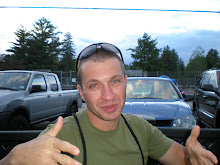
I haven’t been able to write in the last 10 days, but I am still in Salt Lake City and I am still skiing! In fact it was a powder day on Tuesday and Wednesday!
To my none-skiing readers, I am posting a glossary of technical ski terms:
Telemark skiing is a term used for skiing using the Telemark turn. It is also known as "free heel skiing." Unlike alpine skiing equipment, the skis used for telemarking have a binding that only connects the boot to the ski at the toes, just as in cross-country skiing. Telemark turns are led with the heel flat on the outside ski (the downhill ski at the end of the turn), while the inside (uphill) ski is pulled beneath the skier's body with a flexed knee and raised heel.
Backcountry Skiing is skiing in a sparsely inhabited rural region over ungroomed and unmarked slopes or pistes including skiing in unmarked or unpatrolled areas outside of ski resort's boundaries, frequently amongst trees ("glade skiing"), usually in pursuit of fresh fallen snow, known as powder. More importantly, the land and the snow pack are not monitored, patrolled, or maintained. Fixed mechanical means of ascent such as ski lifts are typically not present, but may be used to gain initial altitude. Backcountry skiing, ski touring or ski mountaineering can involve single or multi-day trips through snow camping or the use of mountain huts where available. Backcountry skiing can be highly dangerous due to avalanche danger, exhaustion & mountain weather. Other hazards include cliffs, rock fall and tree wells.
To my none-skiing readers, I am posting a glossary of technical ski terms:
Telemark skiing is a term used for skiing using the Telemark turn. It is also known as "free heel skiing." Unlike alpine skiing equipment, the skis used for telemarking have a binding that only connects the boot to the ski at the toes, just as in cross-country skiing. Telemark turns are led with the heel flat on the outside ski (the downhill ski at the end of the turn), while the inside (uphill) ski is pulled beneath the skier's body with a flexed knee and raised heel.
Backcountry Skiing is skiing in a sparsely inhabited rural region over ungroomed and unmarked slopes or pistes including skiing in unmarked or unpatrolled areas outside of ski resort's boundaries, frequently amongst trees ("glade skiing"), usually in pursuit of fresh fallen snow, known as powder. More importantly, the land and the snow pack are not monitored, patrolled, or maintained. Fixed mechanical means of ascent such as ski lifts are typically not present, but may be used to gain initial altitude. Backcountry skiing, ski touring or ski mountaineering can involve single or multi-day trips through snow camping or the use of mountain huts where available. Backcountry skiing can be highly dangerous due to avalanche danger, exhaustion & mountain weather. Other hazards include cliffs, rock fall and tree wells.
Powder is a fresh snow that is both dry and light. For most skiers, skiing in powder is the ultimate experience on the slopes.
I will write more in the next few days. (It's not me on the picture, but perhaps I could look like that in the near future...)


No comments:
Post a Comment